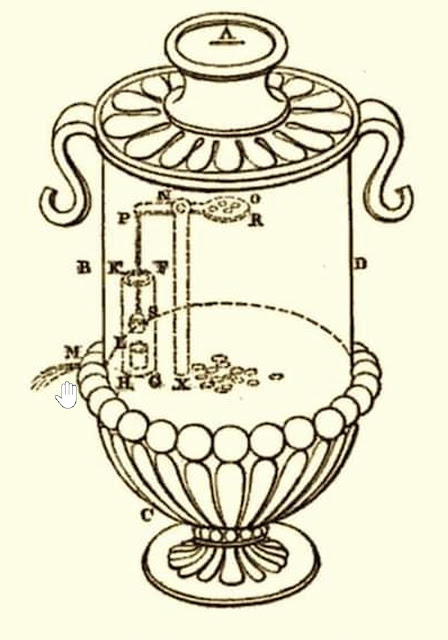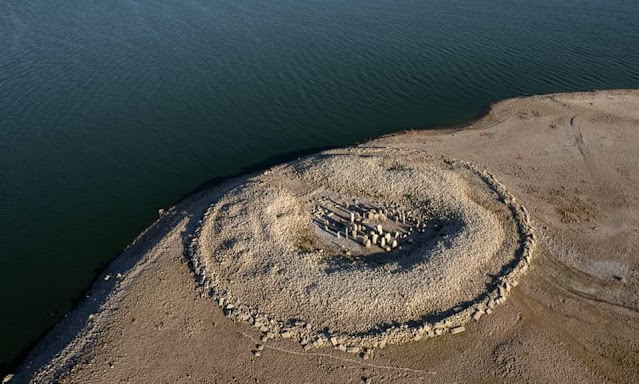Modern architecture produces truly
innovative work: glittering, staggeringly tall buildings, opera houses that
look like folded origami, museums that look like spaceships. However, in
turning towards everything new, architectural modernism also dogmatically left
behind much of what makes buildings lovely. The best architects of the modern
age have managed to avoid this pitfall, discarding older, dull conventions
while retaining the meaningful and beautiful aspects of tradition. Perhaps one
of the most successful architects at finding this balance was a whimsical,
absent-minded American named Louis Kahn. Kahn was born in 1901. As a young man
he studied architecture at the University of Pennsylvania, but his career truly
blossomed in the 1950s after a trip to Rome led him to a new appreciation of
ancient designs. Kahn’s important contribution to modern architecture was to
include these older and even ancient elements in his work without losing the
innovation and clarity of modernism.
One example of this successful
rehabilitation of old ideas was Kahn’s affection for symmetry, which modern
architects usually saw as unimaginative and conformist. Kahn designed the Salk
Institute in La Jolla, California, as a complex of buildings, identical on
either side of a central fountain. Such symmetry was characteristic of the
Beaux-Arts style, but Kahn was unperturbed by this apparent regression. ‘If
people want to see Beaux-Arts, it’s fine with me,’ he said. ‘I’m [as]
interested in good architecture as anybody else.’ Kahn used the identical rows
of buildings to draw the viewer’s eye to the centre of his design, and to the
sea beyond it. The fountain that runs through the centre of the institute
aligns with the path of the sun on both the autumnal and vernal equinox. Thus
Kahn used symmetry not as an aesthetic default but instead with great
intentionality, to provide one with a sense of balance, focus, and momentum.
Kahn also managed to create a sense of grandeur in his designs rarely seen in
modern architecture. We might gape at the height of a skyscraper, but it rarely
instils the sense of awe that a great cathedral generates.
Yet Kahn managed to
reintroduce this sense of wonder and magnificence to modern works. In the Yale
Centre for British Art, he draws the viewer’s eyes upward to the high windowed
ceiling, much as though it were the dome of a church. The building’s width is
imposing; even the staircases create a sense of lofty space and height. The
viewer feels reverence and appreciation not only for the art on display, but
for buildings, museums and the idea of culture itself. Most modern architects
have relied mainly on steel, concrete, and glass, but Kahn sought a wide
variety of sensory materials. He regularly brought consultants into his office
to find new uses for ceramic, copper, and other unusual substances, and once he
had his class at Yale think of as many possible uses for clay as they could
imagine. Most of all, he rejected the idea that architects should always use
the and modern building materials. Instead, he instructed his students to ask
the materials for advice: ‘You say to a brick, “What do you want, brick?” And
brick says to you, “I like an arch.” And you say to brick, “Look, I want one,
too, but arches are expensive and I can use a concrete lintel.” And then you
say: “What do you think of that, brick?” Brick says: “I like an arch.”’ In
short, the brick should have its way.
Kahn especially liked to cleverly
juxtapose unexpected materials like concrete and oak, as he did in his Esherick
House, built in 1959. Usually, we associate oak wood with Victorian smoking
rooms and dusty, ancient libraries, while concrete reminds us of impersonal
factories and remote, futuristic buildings. But together, the two mediums
demonstrate strikingly different, yet remarkably complementary virtues. The
wood gives the space a warmth and domesticity that makes the house a good place
for a bookworm, while the concrete provides a sense of strength and stability
that lends it a reassuring feeling of refuge from the outside world. This
combination of materials subtly suggests that we can find comfort and strength
together. Finally, Kahn is remembered as a monumental architect – in both
senses – during a time when most modern architects firmly rejected monuments as
useless and sentimental. In 1938 the architectural critic Lewis Mumford firmly
declared, ‘If it is a monument it is not modern and if it is modern it cannot
be a monument.’ But Kahn liked monuments.
After his important trip to Rome, he
wrote: ‘I finally realise that the architecture of Italy will remain as the
inspirational source of the works of the future … those who don’t see it that
way ought to look again. Our stuff looks tinny compared to it.’ The marble Kahn
used in his Kimbell Arts Museum, in Fort Worth, Texas is, for example, a clear
reference to the ancient buildings that Kahn so admired. When Kahn died in
1974, he was perhaps the most famous architect in the United States, and he
remained deeply influential. Kahn’s importance lay in his ability to transcend dogmatic
modernism and return beautiful traditional elements of architecture to their
rightful place in the canon of design, where they could continue to bring
gravitas, elegance, and splendour for future generations.





.jpg)
.jpg)
.jpg)
.jpg)

